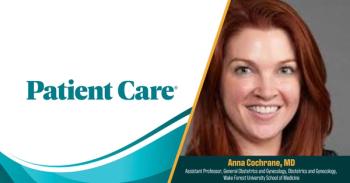
Preoperative Evaluation:
For patients with cardiovascular risk factors, the most serious complication of noncardiac surgery is a perioperative cardiac event, such as myocardial infarction or sudden death. The preoperative cardiac assessment is an essential tool for identifying patients at risk for cardiac complications and for recommending appropriate strategies to minimize risk.
A 67-year-old man with well-controlled hypertension and hyperlipidemia and a history of transient ischemic attacks is scheduled to undergo a carotid endarterectomy. Is cardiac stress testing warranted for this patient?
For patients with cardiovascular risk factors, the most serious complication of noncardiac surgery is a perioperative cardiac event, such as myocardial infarction or sudden death. The preoperative cardiac assessment is an essential tool for identifying patients at risk for cardiac complications and for recommending appropriate strategies to minimize risk.
In this article, I present several methods for identifying at-risk patients. I also discuss additional tests that can help determine the need for treatment and monitoring in patients at intermediate or (in certain cases) low risk, and I describe interventions and strategies that can reduce perioperative mortality and morbidity in patients at high risk.
DETERMINING THE NEED FOR CARDIAC EVALUATION
Several cardiac risk assessment systems have been used to identify patients in whom preoperative cardiac evaluation is recommended. In 1977, Goldman and colleagues1 published the first index designed to improve the objectivity of assessment specifically of perioperative cardiac risk. Using a stepwise discriminant analysis, they identified 9 factors that were weighted to provide an overall score that corresponded to a patient's risk of serious perioperative cardiac complications. Whether additional cardiac testing was recommended was determined by the patient's risk category. However, the factors in this index were determined on the basis of observational studies rather than more rigorous cohort studies or randomized controlled trials. The index has also been criticized for not including angina pectoris and congestive heart failure (CHF) in the list of factors associated with increased risk.
In 1986, Detsky and colleagues2 produced a modified index that incorporated angina pectoris and CHF. However, the Detsky index was also based on observational data and not on more rigorous evidence. Both the Goldman and Detsky indices have a low sensitivity for the identification of higher-risk patients whose index score places them in the intermediate-risk category. In 1995, Paul and Eagle3 used more evidenced-based methodology to identify clinical predictors of perioperative cardiovascular risk.
The ACC/AHA guidelines. Building on the idea of clinical predictors and use of an evidence-based approach to preoperative cardiac assessment, the American College of Cardiology (ACC) and the American Heart Association (AHA) in 1996 published clinical practice guidelines, which were updated in 2002.4 The ACC/AHA guidelines are based on an explicit evaluation of current evidence and include cohort, case-control, and observational studies, as well as expert opinion (level B evidence). They use a stepwise approach to help determine which patients require preoperative cardiac evaluation (Algorithm).
To determine whether preoperative cardiac evaluation is needed, the ACC/AHA guidelines require consideration of 6 factors:
- Whether the surgery contemplated is emergent.
- Whether the patient has recently undergone a coronary revascularization procedure (there is evidence that previous coronary revascularization confers protection against perioperative cardiac events for 5 years, as long as coronary symptoms have not redeveloped).
- Whether the patient has had a recent favorable cardiac evaluation.
- The presence of major, intermediate, or minor clinical predictors (Table 1).
- Functional capacity, quantified in metabolic equivalents (METs) (Table 2).
- Riskiness of the proposed surgery (Table 3).
To make the algorithm more user-friendly, the revised version of the guidelines provides a "shortcut" designed to simplify the decision to test (Box).
•Acute or recent myocardial infarction* with evidence of important ischemic risk by clinical symptoms or noninvasive study
•Unstable or severe+ angina (Canadian class III or IV)
•Decompensated heart failure
•High-grade atrioventricular block
•Symptomatic ventricular arrhythmias in the presence of underlying
heart disease
•Supraventricular arrhythmias with uncontrolled ventricular rate
•Severe valvular disease
Applying the algorithm. To better appreciate how the ACC/AHA algorithm works, it is helpful to apply it to specific cases. Let us look first at the patient mentioned at the beginning of this article. The surgery in question (carotid endarterectomy) is nonemergent, and the patient has not had revascularization or a recent coronary evaluation. Thus, his clinical predictors must be evaluated. None of the major, intermediate, or minor clinical predictors listed in Table 1 are present. His planned endarterectomy is considered an intermediate-risk procedure (see Table 3). The algorithm indicates that patients with no clinical predictors and for whom the procedure that is planned is low or intermediate risk can proceed to the operating room; no coronary assessment is needed.
Next, consider the case of a 73-year-old woman with hypertension, diabetes, and hyperlipidemia in whom repair of an abdominal aortic aneurysm (AAA) is planned. She has not had revascularization or a recent coronary evaluation. Her history of diabetes is an intermediate clinical predictor (see
Table 1
), and AAA repair is considered a high-risk procedure (see
Table 3
). According to the algorithm, a coronary evaluation for risk stratification is recommended for all patients with intermediate clinical predictors in whom high-risk surgery is planned.
Alternative approaches to risk stratification. In 1997, the American College of Physicians (ACP) published guidelines for perioperative assessment and management of coronary artery disease risk. The college's recommendations are very similar to the ACC/AHA guidelines and include evaluation of all surgical patients by clinical indices, minimal evaluation of low-risk patients, and optimal management of patients found to be at high risk (including consideration of delay of nonemergent surgery). The ACP guidelines recommend perioperative b-blocker therapy for high-risk patients in whom it is not contraindicated.
Activities of daily living (eg, eating, dressing, using the toilet)
Walking around the house
Walking a block or 2 on level ground at 2 - 3 mph, or 3.2 - 4.8 km/h
Light housework, such as dusting or washing dishes
The major differences between the ACP guidelines and those of the ACC/AHA include:
- The use of Detsky's modified cardiac risk index to assess clinical risk.
- A different method for assessing the strength of evidence.
- The ACP guidelines do not incorporate functional capacity, whereas the ACC/AHA guidelines do.5
High
TESTS FOR CARDIAC EVALUATION
Once you have determined that a preoperative cardiac evaluation is necessary, the next step is to decide which test to use. A number of options are available. The decision is based on resources, patient history, and the preference of the physician.6
Exercise stress testing (EST) without perfusion imaging is the most commonly used and least expensive study. In EST, the goal is to achieve 85% of the predicted maximum heart rate or a high workload in terms of METs. The usefulness of the test can be limited by preexisting ST-T-wave abnormalities or comorbid conditions such as arthritis. Its sensitivity is about 68% and its specificity, 77%.7
Other noninvasive testing options include EST with perfusion imaging, pharmacologic stress testing with perfusion imaging, and pharmacologic stress testing with echocardiography (using dobutamine infusion). EST with perfusion imaging using thallium or sestamibi identifies a myocardium at risk for coronary ischemia. This test is more expensive than EST without perfusion imaging but provides more information about the specific area of the myocardium at risk and about left ventricular dysfunction.
Pharmacologic stress testing with perfusion imaging is helpful for patients who are unable to exercise to elevate their heart rate to target range. Sensitivity and specificity for coronary artery disease are similar to exercise testing with thallium.
Pharmacologic stress testing with echocardiography using dobutamine infusion is a newer test. Experience with the test is increasing; however, it is expensive and can cause arrhythmias. This is another test that can assess left ventricular function.
Coronary angiography may also be appropriate in certain clinical situations. For example, patients with a very high risk of coronary artery disease as determined by the presence of cardiac risk factors and significant symptoms (such as chest pain at rest)may be best evaluated with coronary artery angiography.
STRATEGIES TO REDUCE PERIOPERATIVE CARDIAC RISK
The risk of cardiac complications after surgery can often be reduced by modifying preoperative or intraoperative care. The appropriateness of a given strategy is determined by the patient's history, the results of the cardiac risk assessment, and results of any testing that has been performed.
β-Blocker therapy. By modifying the postoperative neurohumoral response, β-blockers can help prevent postoperative myocardial ischemia in some patients.
Evidence of the effectiveness of β-blockers in patients with risk factors for coronary artery disease or proven coronary artery disease who are undergoing any type of high-risk surgery (such as intrathoracic or intraperitoneal procedures) is limited. Mangano and colleagues8 and Poldermans and colleagues9 published randomized controlled trial results that support the use of perioperative β-blocker therapy. However, a recently published study involving 921 patients with diabetes who were undergoing noncardiac surgery failed to show that metoprolol significantly decreased the risk of death and cardiac complications.10
A retrospective cohort study published in July 2005 suggests that perioperative β-blocker therapy is helpful in reducing mortality among high-risk but not low-risk patients undergoing major noncardiac surgery.11 Another retrospective study suggests that empiric β-blocker therapy in low-risk patients may obviate the need for preoperative noninvasive testing and that perioperative β-blocker therapy may allow higher-risk patients with negative results on pharmacologic stress testing to proceed to surgery.12
Preoperative revascularization. Consider coronary artery bypass surgery for patients with ischemia inadequately controlled by medical management, with left main ischemia, or with 3-vessel disease. However, bypass surgery is not indicated simply to "get a patient through" noncardiac surgery. Patients in whom bypass surgery is indicated need the procedure whether or not they are having surgery.
Management of CHF. CHF symptoms need to be controlled. Consider regional anesthesia in affected patients. In patients with limited ventricular reserve, hemodynamic monitoring can be helpful.
Lipid-lowering therapy. A recent retrospective cohort study14 indicated that perioperative lipid-lowering therapy may reduce mortality after major noncardiac surgery. Treatment with a lipid-lowering agent was associated with a lower overall mortality even after adjusting for differences in the treatment groups. However, randomized controlled clinical trials are required to confirm this observation.
References:
REFERENCES:
1.
Goldman L, Caldera DL, Nussbaum SR, et al. Multifactorial index of cardiac risk in noncardiac sur-gical procedures.
N Engl J Med
. 1977;297:845-850.
2. Detsky AS, Abrams HB, Forbath N, et al. Cardiac assessment for patients undergoing noncardiac sur-gery. A multifactorial clinical risk index. Arch Intern Med. 1986;146:2131-2134.
3. Paul SD, Eagle KA. A stepwise strategy for coronary risk assessment for noncardiac surgery. Med Clin North Am. 1995;79:1241-1262.
4. Eagle KA, Berger PB, Calkins H, et al. ACC/AHA guideline update for perioperative cardiovascular evaluation for noncardiac surgery: executive summary: a report of the American College of Cardiology/American Heart Association Task Force on Practice Guidelines (Committee to Update the 1996 Guidelines on Perioperative Cardiovascular Evaluation for Noncardiac Surgery). J Am Coll Car-diol. 2002;39:542-553.
5. Palda VA, Detsky AS. Perioperative assessment and management of risk from coronary artery disease. Ann Intern Med. 1997;127:313-328.
6. Zuniga RE, Rappaport W, Valente J, et al. Preoperative screening for perioperative cardiac risk. Am Fam Physician. 1991;44:1285-1291.
7. Grecu L, Mehaffey C, Isselbacher E. Preoperative noninvasive cardiac testing: which test and why? Intl Anesth Clinics. 2002;40:121-132.
8. Mangano DT, Layug EL, Wallace W, et al. Effect of atenolol on mortality and cardiovascular morbidity after noncardiac surgery. N Engl J Med. 1996;335: 1713-1720.
9. Poldermans D, Boersma E, Bax JJ, et al. The effect of bisoprolol on perioperative mortality and myocardial infarction in high-risk patients undergoing vascular surgery. N Engl J Med. 1999;341:1789-1794.
10. Juul AB, Wetterslev J, Kofoed-Enevoldsen A, et al. The diabetic postoperative mortality and morbidity (DIPOM) trial: rationale and design of a multicenter, randomized, placebo-controlled, clinical trial of metoprolol for patients with diabetes mellitus who are undergoing major noncardiac surgery. Am Heart J. 2004;147:677-683.
11. Lindenauer PK, Pekow P, Wang K, et al. Perioperative beta-blocker therapy and mortality after major noncardiac surgery. N Engl J Med. 2005;353:349-361.
12. Boersma E, Poldermans D, Bax JJ, et al. Predictors of cardiac events after major vascular surgery: role of clinical characteristics, dobutamine echocardiography, and b-blocker therapy. JAMA. 2001;285: 1865-1873.
13. Lindenauer PK, Pekow P, Wang K, et al. Lipid-lowering therapy and in-hospital mortality following major noncardiac surgery. JAMA. 2004;291:2092-2099.
Newsletter
Enhance your clinical practice with the Patient Care newsletter, offering the latest evidence-based guidelines, diagnostic insights, and treatment strategies for primary care physicians.
































































































































































































































































































